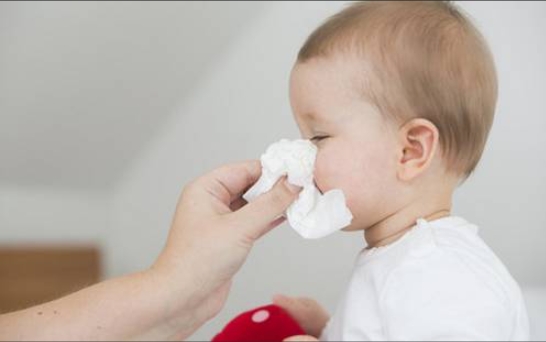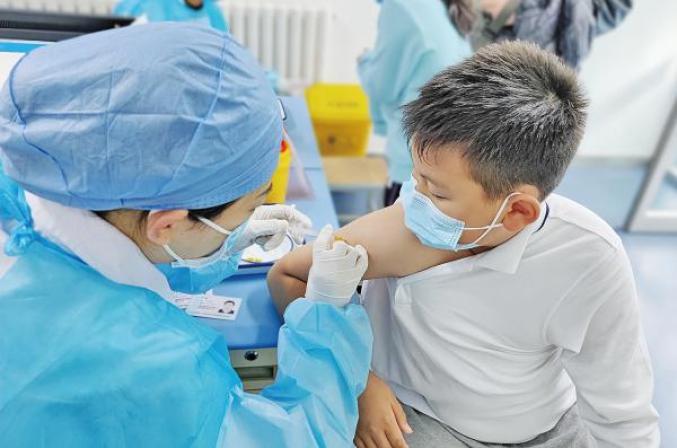Since autumn, pediatric outpatient mycoplasma pneumonia high incidence, many children have been ill for a long time, parents worried, do not know how to deal with. The problem of drug resistance to the treatment of mycoplasma has also made this wave of infections become the focus of attention. Let’s take a look at mycoplasma pneumonia.
1. What causes mycoplasma pneumonia? Is it contagious? By what?
Mycoplasma pneumonia is an acute lung inflammation caused by mycoplasma pneumoniae infection. Mycoplasma is the smallest microorganism that can survive independently between viruses and bacteria, and is an important pathogen of respiratory tract infection in children, but in fact, it is not a newly emerged pathogenic microorganism, every year, year-round, every 3 to 5 years can be a small epidemic, and the incidence rate will be 3 to 5 times higher than usual during the epidemic season. This year, the global incidence of mycoplasma infection is on the rise, and has the characteristics of young age, and it is easy to break out in kindergartens and schools, so children are the key protection groups of mycoplasma pneumonia. Mycoplasma pneumonia is an infectious disease that is self-limiting and also contagious, transmitted through close contact with oral and nasal secretions or through airborne droplets from oral and nasal secretions. The disease usually develops after 2 to 3 weeks. After the epidemic, fewer people wear masks, creating favorable conditions for the spread of mycoplasma.
2. Who is susceptible to mycoplasma pneumonia? What season is high incidence of mycoplasma pneumonia? What are the symptoms?
People between the ages of 4 and 20 are most likely to get mycoplasma pneumonia, but the youngest child is a 1-month-old baby. The number of cases begins to increase in summer and peaks in late autumn or winter. Children with mycoplasma pneumoniae pneumonia infection in different age characteristics are not the same, the most common symptoms are fever, cough. Because the pulmonary symptoms of early children are not obvious, they are often not paid attention to, and parents may abuse antibiotics based on experience to cause ineffective medication, such as penicillin drugs, amoxicillin, amoxicillin clavulanate potassium, piperacillin, etc., because penicillin has no therapeutic effect on mycoplasma, easy to delay the disease. The first symptoms of young children are cough and sputum, accompanied by wheezing, wheezing in the lungs, and the body temperature is mostly between 38.1 and 39 ° C, which is moderate fever. The bronchial wall of children is inelastic, the pressure of exhalation makes the lumen narrow, the secretion is not easy to discharge, and it is easy to appear atelectasis and emphysema, if combined with bacterial infection, and may lead to empyema. In older children, the first symptom is a cough accompanied by fever or 2 to 3 days later, mainly a flurries or persistent irritating dry cough. A small number of children with rapid disease development, breathing difficulties and other critical symptoms, must be paid great attention to. And a quarter of the children have rashes, meningitis, myocarditis and other extrapulmonary manifestations.
3. Suspected mycoplasma pneumonia to go to the hospital what department?
Children under 14 years old to see pediatrics, more than 14 years old can go to the respiratory department diagnosis and treatment, serious symptoms can be registered in the emergency department. After the doctor’s consultation and examination, he may need to go to the imaging department and clinical laboratory to do some auxiliary tests. Go to the laboratory to test serum mycoplasma antibody (IgM antibody), blood routine, hypersensitive C-reactive protein (hs-CRP). Serum antibodies to mycoplasma, if greater than 1:64, or a 4-fold increase in the titer during recovery, can be used as a diagnostic reference; Blood routine results focus on the number of white blood cells (WBC), generally normal, may be slightly increased, and even some will be slightly lower, this is different from bacterial infection, bacterial infection white blood cells will generally increase; CRP will be elevated in mycoplasma pneumonia, and if it is greater than 40mg/L, it can also be used to determine refractory mycoplasma pneumonia. Other tests can also check myocardial enzymes, liver and kidney function, or directly detect mycoplasma pneumoniae antigen in respiratory specimens for early and rapid diagnosis. According to the need, electrocardiogram, electroencephalogram, chest X-ray, chest CT, urinary system color ultrasound and other special examinations may be done.
4. Treatment of mycoplasma pneumonia in children
After the diagnosis of mycoplasma pneumonia, it is necessary to follow the doctor’s advice for treatment of anti-infective drugs, the first choice is macrolides, which are well-known erythromycin drugs, which can control the production of mycoplasma protein and inhibit the occurrence of inflammation. At present, azithromycin is commonly used in clinical practice, which can specifically enter the inflammation site, avoid the shortcomings of erythromycin, and is more efficient and safer than erythromycin. Be careful not to take antibiotics in hot water; Do not take with milk, milk enzyme and other viable bacteria preparations; Do not drink juice within 2 hours of taking antibiotics, eat fruit, because fruit juice contains fruit acid, accelerate the dissolution of antibiotics, affect the efficacy; Also avoid vinegar and drugs and foods that contain alcohol, such as Huoxiang Zhengqi water, rice wine, etc.
Symptomatic treatment such as fever reduction, cough relief and phlegm reduction can be given before a definite diagnosis. If mycoplasma antibody is positive, azithromycin should be given at the rate of 10mg per kilogram of body weight for anti-infection. In severe cases, intravenous infusion of azithromycin is required. It can also be treated with traditional Chinese medicine, but due to the greater damage to the lungs of mycoplasma pneumonia, severe cases may be combined with pleural effusion, atelectasis, necrotic pneumonia, etc. At present, Western medicine is recommended as the main treatment.
After treatment, children with mycoplasma pneumoniae no longer have fever and cough, and respiratory symptoms disappear completely for more than 3 days, it is not recommended to continue to take antibacterial drugs to avoid resistance.
5. What does the diet of children with mycoplasma pneumonia need to pay attention to?
During the period of mycoplasma pneumonia, patients with large physical consumption, diet nursing is very important. Scientific and reasonable diet is very helpful to the recovery of the disease, should strengthen nutrition, with high calories, rich in vitamins, easy to digest liquid food and semi-liquid food, can properly eat fresh vegetables, fruits, high-protein diet and help to enhance immunity of food. For children with mycoplasma pneumonia, parents should raise the head of the child when feeding to prevent choking and suffocation. If a child with mycoplasma pneumonia has a poor diet or is unable to eat, parenteral nutrition supplementation can be prescribed by the doctor.
We should pay more attention to the diet of children with mycoplasma pneumonia, pay attention to diet, and do not eat foods that can not be eaten, so as not to aggravate the development of the disease. Sick children often have no appetite, parents often spoil all kinds of satisfaction, but some foods are needed to avoid.
6. How to protect children’s respiratory health and prevent mycoplasma pneumonia?
(1) Enhance immunity:
Children with low immunity are susceptible to mycoplasma pneumonia, so it is particularly important to improve the immunity of the body. Strengthen exercise, eat vegetables and fruits, supplement high-quality protein, are all ways to improve their own immunity; At the same time to avoid the decline of their own immunity, changing seasons or climate changes when going out, to add clothes in time to prevent cold and cold;
(2) Pay attention to healthy diet:
To maintain good eating habits, eat more fresh vegetables and fruits and other healthy food, do not eat spicy, greasy, raw and cold food, balanced diet, regular diet. You can eat more lung nourishing food, such as Sydney and white radish, reduce cough expectoration;
(3) Maintain good living and study habits:
Work and rest regularity, combination of work and rest, relax mood, ensure adequate sleep. The autumn and winter climate is dry, the dust content in the air is high, and the human nasal mucosa is easy to be damaged. Drink more water to keep the nasal mucosa moist, which can effectively resist the invasion of viruses, and help the excretion of toxins in the body and purify the internal environment;
(4) Proper physical exercise:
Physical exercise helps keep the respiratory system healthy, boosts metabolism, and enhances disease resistance. Aerobic exercises such as brisk walking, running, jumping rope, aerobics, playing basketball, swimming, and martial arts can enhance lung function, improve oxygen uptake capacity, and increase the metabolic capacity of the respiratory system. After exercise, pay attention to dry the sweat in time to keep warm; Appropriate outdoor exercise, but not strenuous exercise.
(5) Good protection:
Considering that mycoplasma is mainly transmitted through droplets, if there are patients with fever and cough, disinfection and isolation should be taken in time. Try not to go to crowded public places; If there are no special circumstances, try to wear a mask to reduce the chance of infection;
(6) Pay attention to personal hygiene:
Good personal hygiene and environmental hygiene, wash hands frequently, bathe frequently, change clothes frequently, and dry clothes frequently. Wash your hands with running water and soap immediately after using the toilet before meals, after going out, after coughing, sneezing, and after cleaning your nose to reduce the spread of bacteria and viruses. Do not touch facial areas such as mouth, nose and eyes with dirty hands to reduce the chance of infection. When coughing or sneezing in crowded public places, use a handkerchief or paper to cover the mouth and nose to minimize spray; Do not spit anywhere to prevent germs from polluting the air and infecting others;
(7) Maintain good indoor air quality:
Pay attention to room ventilation to reduce pathogen invasion. Autumn is dry and dusty, and various pathogenic microorganisms and allergens can be attached to dust particles and enter the airway through respiration. Should often open the doors and Windows, ventilation, each ventilation time of 15 to 30 minutes, keep the ambient air circulation. You can regularly use vinegar fumigation, ultraviolet light and other indoor air disinfection, ultraviolet disinfection should be as far as possible to choose in the indoor disinfection, if someone is in the room, pay attention to protect the eyes. Pollutants in the air such as dust, smoke and chemicals can cause damage to the respiratory system, do not stay in a polluted environment for a long time. Measures such as regularly cleaning the home environment, maintaining ventilation, using air purifiers or indoor plants can reduce harmful substances in the indoor air;
(8) Stay away from second-hand smoke:
Smoking impairs lung function and increases the risk of respiratory disease. Protecting children from second-hand smoke can significantly improve their respiratory health.
(9) Vaccination:
Influenza vaccine, pneumonia vaccine and other vaccines should be injected according to their own conditions to prevent respiratory infections to the greatest extent.
In short, improving your immunity is the key. For mycoplasma pneumonia, we should pay full attention to it and do not have to be too nervous. Although it is popular, the harm is limited, most can heal themselves, and there are safe and effective treatments.
Post time: Dec-03-2023






